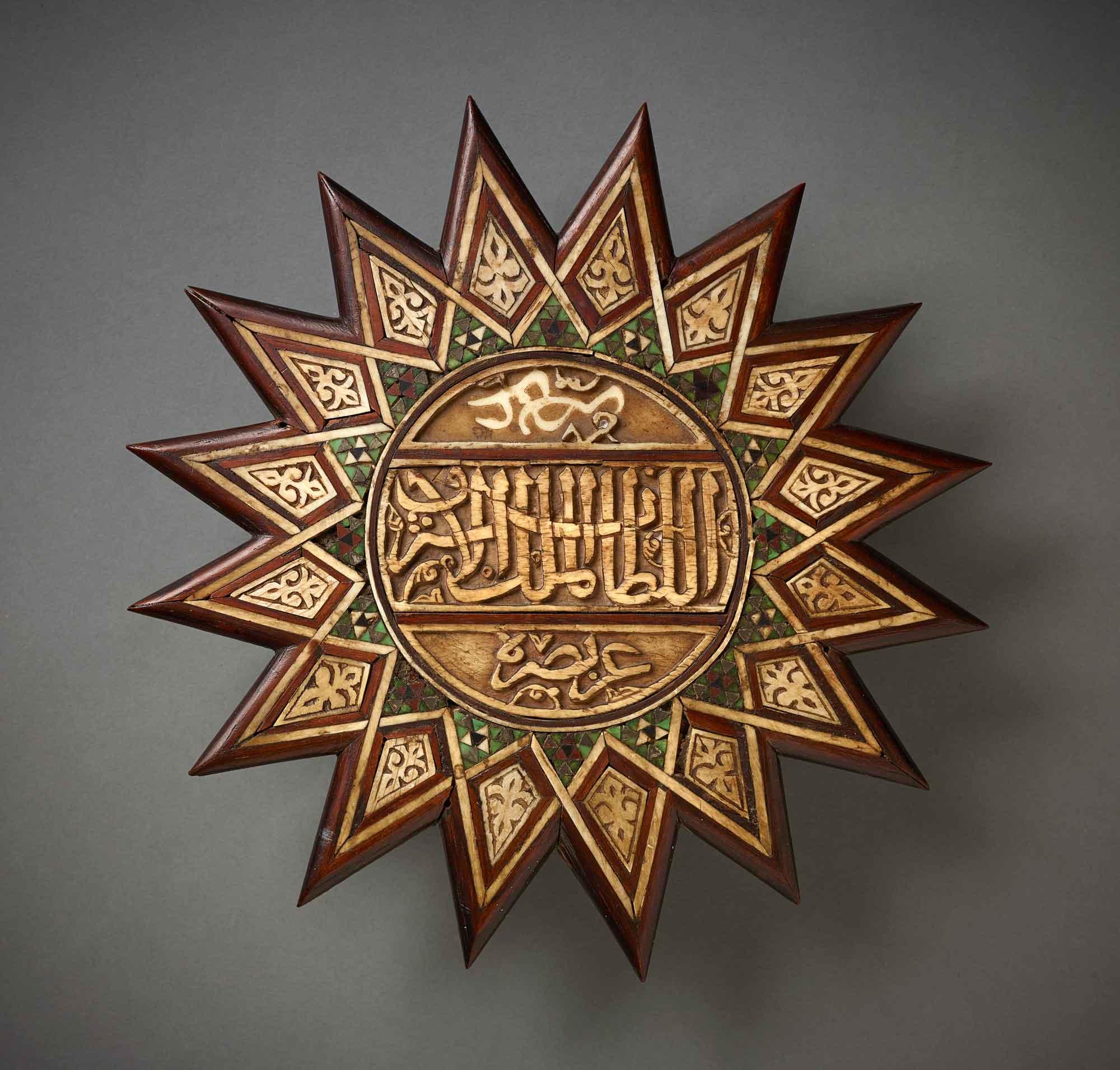Click on the image to zoom
Panel
- Accession Number:AKM703
- Place:Egypt
- Dimensions:Diameter 22 cm
- Date:second half of 15th century
- Materials and Technique:Ivory, wood, and metal in a wooden frame
Geometric compositions based on stars and polygons were a common feature of the decorative language of Egypt and Syria under the Mamluks (1250–1517). This sixteen-point star-shaped panel inlaid with finely carved ivory was probably a central piece in a repetitive pattern that adorned the interior of an important building. The inscription in the centre of the panel is the heraldic blazon of the Mamluk Sultan al-Ashraf Qaytbay who ruled between 1468 and 1496. The star-shaped panel was probably meant for one of his architectural projects and bears resemblance to the superb star patterns decorating the wooden pulpit (minbar) of Qaytbay’s complex, which was built in Cairo’s north cemetery in the 1470s. Geometric patterns and heraldic blazons were employed extensively by the Mamluks on a broad variety of objects and in different media.
Note: This online resource is reviewed and updated on an ongoing basis. We are committed to improving this information and will revise and update knowledge about this object as it becomes available.


